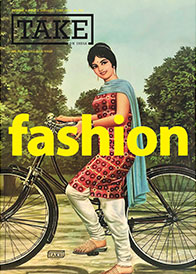Fashion in 20s
From the late 19th Century onwards, the westernisation of men’s clothing in the Indian subcontinent had fundamentally changed the sartorial landscape of the country.
Read More
There are a thousand India’s within our nation; in attire, in lifestyle, in socio-economic fabric. Owing to this kaleidoscopic cultural heritage and various socio-economic shifts in the Indian society — from the pre-Independence era till now —this issue explores the amalgamation of native sensibilities with global influences through the decades. Starting from the British rule and later during the Freedom Movement in the 1920s-40s (with the emphasis on indigenous weaves such as Khadi) followed by the vibrant hues and prints of the flower movement – whose effects percolated from the West to Asian cultures. Following this was the huge cinematic influences of the 1970s and 1980s, and then from the 1990s, the exploration of modern fashion photography on a global scale which in turn led to the evolution of the robust Indian fashion industry.
Moving away from a regular format of commissioning essays and articles by ‘expert’ authors, the main narrative through this issue of TAKE has been created through a series of interactions with people from a range of personal and cultural backgrounds, each of whom has contributed with reminiscences, anecdotes, photographs and other kinds of visual material, from a variety of sources, which include family albums and professional archives. These interactions have been transcribed into quotations, which are interspersed with a continuing, overarching narrative of text, as well as additional relevant images sourced from private and institutional collections. Together, they provide a perspective on Indian fashion over a century, from the early 20th century to now.
View Index Buy NowFrom the late 19th Century onwards, the westernisation of men’s clothing in the Indian subcontinent had fundamentally changed the sartorial landscape of the country.
Read MoreGyanonandini Tagore from Calcutta made this style of wearing the saree popular, where the upper end of the cloth was draped over the left shoulder. It is recorded that Gyanonandini was inspired by the gara in Bombay, in an ensemble comprising of European inspired bodice blouses, petticoats and Western-style leather shoes.
Read More